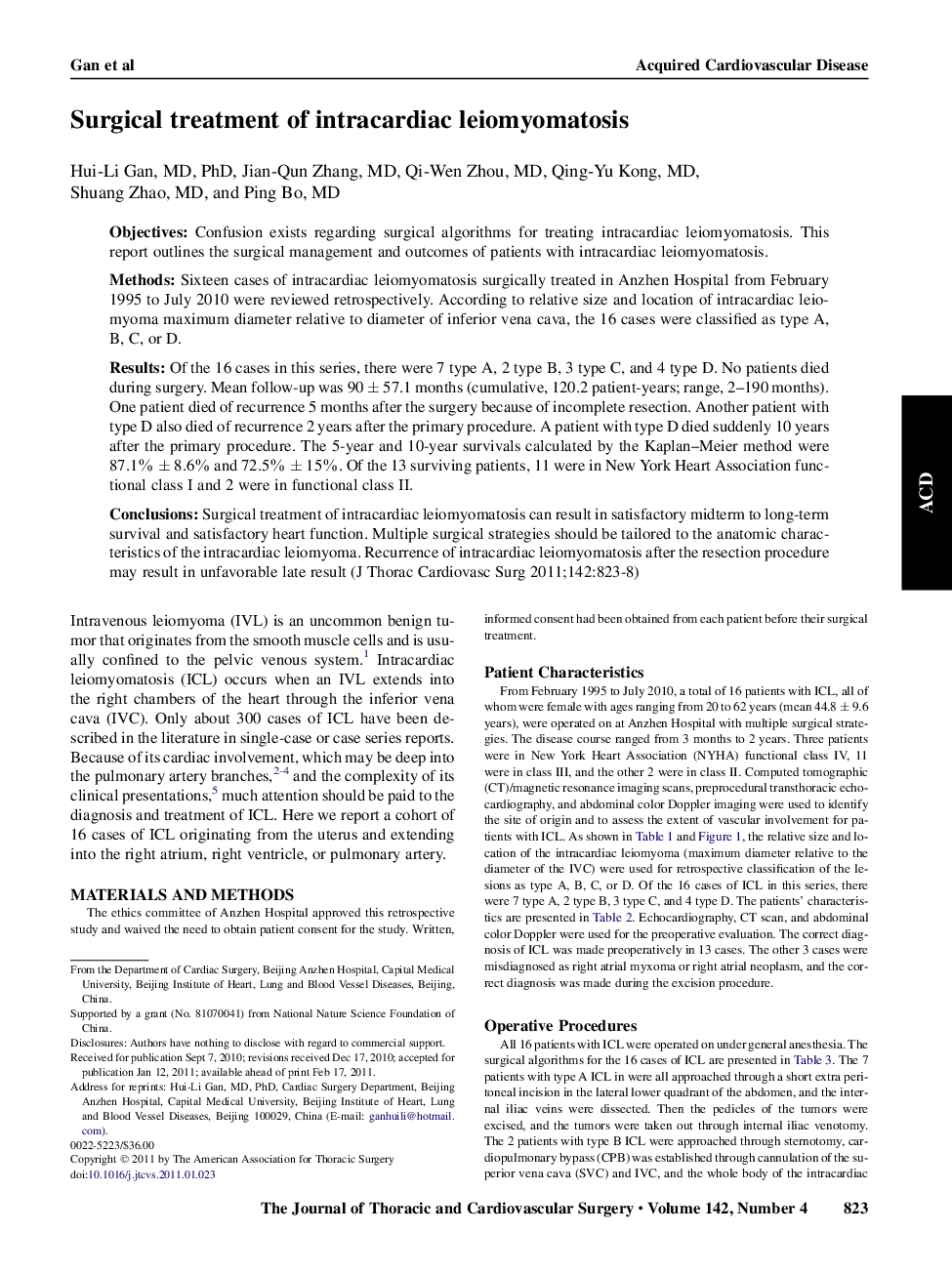| Article ID | Journal | Published Year | Pages | File Type |
|---|---|---|---|---|
| 2981865 | The Journal of Thoracic and Cardiovascular Surgery | 2011 | 6 Pages |
ObjectivesConfusion exists regarding surgical algorithms for treating intracardiac leiomyomatosis. This report outlines the surgical management and outcomes of patients with intracardiac leiomyomatosis.MethodsSixteen cases of intracardiac leiomyomatosis surgically treated in Anzhen Hospital from February 1995 to July 2010 were reviewed retrospectively. According to relative size and location of intracardiac leiomyoma maximum diameter relative to diameter of inferior vena cava, the 16 cases were classified as type A, B, C, or D.ResultsOf the 16 cases in this series, there were 7 type A, 2 type B, 3 type C, and 4 type D. No patients died during surgery. Mean follow-up was 90 ± 57.1 months (cumulative, 120.2 patient-years; range, 2–190 months). One patient died of recurrence 5 months after the surgery because of incomplete resection. Another patient with type D also died of recurrence 2 years after the primary procedure. A patient with type D died suddenly 10 years after the primary procedure. The 5-year and 10-year survivals calculated by the Kaplan–Meier method were 87.1% ± 8.6% and 72.5% ± 15%. Of the 13 surviving patients, 11 were in New York Heart Association functional class I and 2 were in functional class II.ConclusionsSurgical treatment of intracardiac leiomyomatosis can result in satisfactory midterm to long-term survival and satisfactory heart function. Multiple surgical strategies should be tailored to the anatomic characteristics of the intracardiac leiomyoma. Recurrence of intracardiac leiomyomatosis after the resection procedure may result in unfavorable late result
